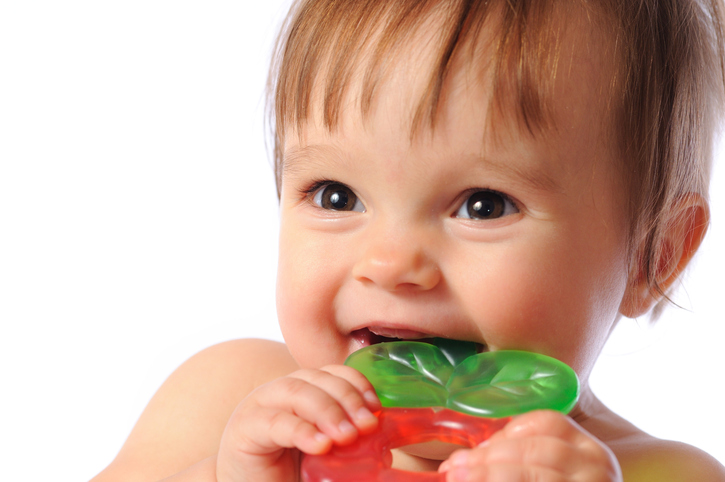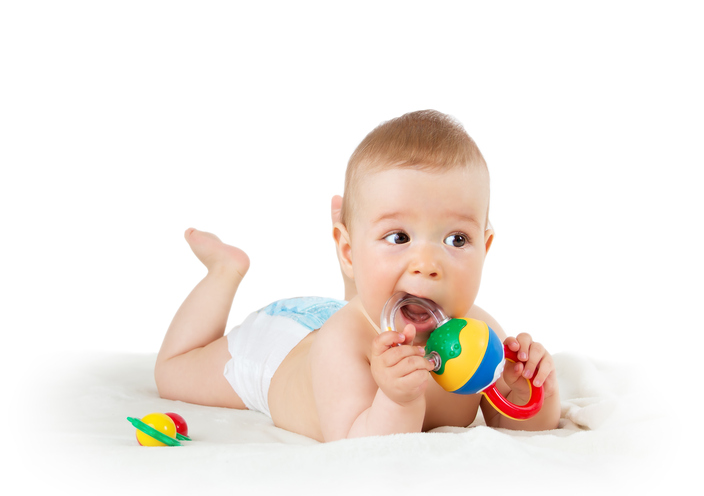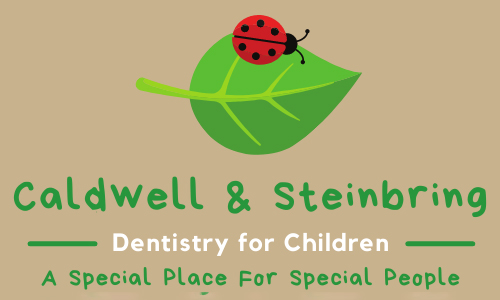Teething
 The appearance of a baby's first tooth is a great milestone. Unfortunately, while this is an exciting time for parents, it can also be a time for worry. When teeth begin growing in it can be very uncomfortable for your child. However, Drs. Caldwell and Steinbring and the team of Caldwell & Steinbring Dentistry For Children believe the experience doesn't have to be painful. You can take steps to ensure the "teething process" is easier on your baby and you.
The appearance of a baby's first tooth is a great milestone. Unfortunately, while this is an exciting time for parents, it can also be a time for worry. When teeth begin growing in it can be very uncomfortable for your child. However, Drs. Caldwell and Steinbring and the team of Caldwell & Steinbring Dentistry For Children believe the experience doesn't have to be painful. You can take steps to ensure the "teething process" is easier on your baby and you.
A Bit About Teething
Teething refers to the process of a baby's primary teeth emerging through the gums and becoming visible in the mouth. This usually begins when your child is between six and nine months of age, though it may start as early as three months or as late as one year. Usually the lower front teeth erupt first, followed by the teeth directly above. Most children develop all 20 of their primary teeth by the age of three.
Recognizing the Signs
Know right when your baby begins teething by looking out for the following signs:
- Irritability
- Biting and gnawing
- Drooling
- Chin rash (caused by excessive salivation)
- Swollen gums
- Ear rubbing
- Decreased appetite
- Disrupted sleep patterns
These signs can start occurring about four days before the tooth breaks through the gum line and can persist for up to 3 days after the tooth appears. Any more extreme symptoms not listed here (like rashes or fever) are not associated with teething. So if your child exhibits such symptoms during teething it is likely due to an unrelated illness and should be reported to your pediatrician right away.
Eruption Cysts
A less common teething issue is the formation of an "eruption cyst," a small bubble-like swelling filled with fluid that covers an erupting tooth. Eruption cysts usually do not require treatment at a pediatric dentist's office, as the tooth will simply pop the cyst when it comes through.
How to Help
The best way to relieve the discomfort your baby may experience from teething is by applying cold and/or pressure to the affected area. You can do this by utilizing:
- Chilled teething rings
- Cold, wet washcloths
- Chilled pacifiers
- Massaging baby's gums
Important Things to Remember
- Make sure to avoid freezing your baby's teething ring or pacifier because this could burn if left in the mouth too long.
- The old-fashioned "remedy" of rubbing whiskey or other alcohol on the gums is neither effective nor appropriate. Do not do this.
- Over-the-counter medication can be helpful, but always check the correct dosage with your pediatrician or pharmacist.
- No kind of medication should be rubbed on the gums because that can burn.
- Numbing agents shouldn't be used on babies under the age of 2 unless directed by a physician.

Call Your Pediatric Dentist Today
If you have any questions or concerns about teething, feel free to contact the team at Drs. Caldwell and Steinbring. And be sure to bring your child in for his or her first visit with a pediatric dentist or special needs pediatric dentist at an early age. It's best to begin dental visits by your child's first birthday to establish a lifelong, health-promoting routine.
We are proud to be the home one of Sugar Land, TX's most trusted and experienced pediatric dentists. Book an appointment with us today! We look forward to meeting with you and your little one!
